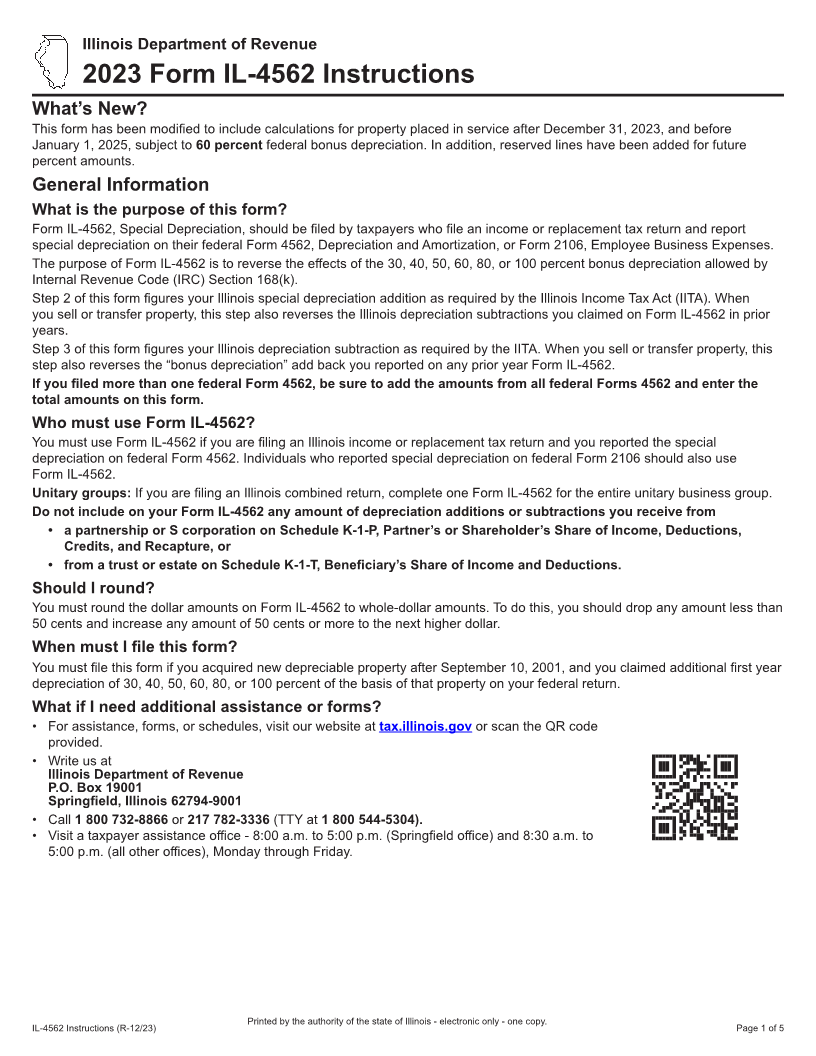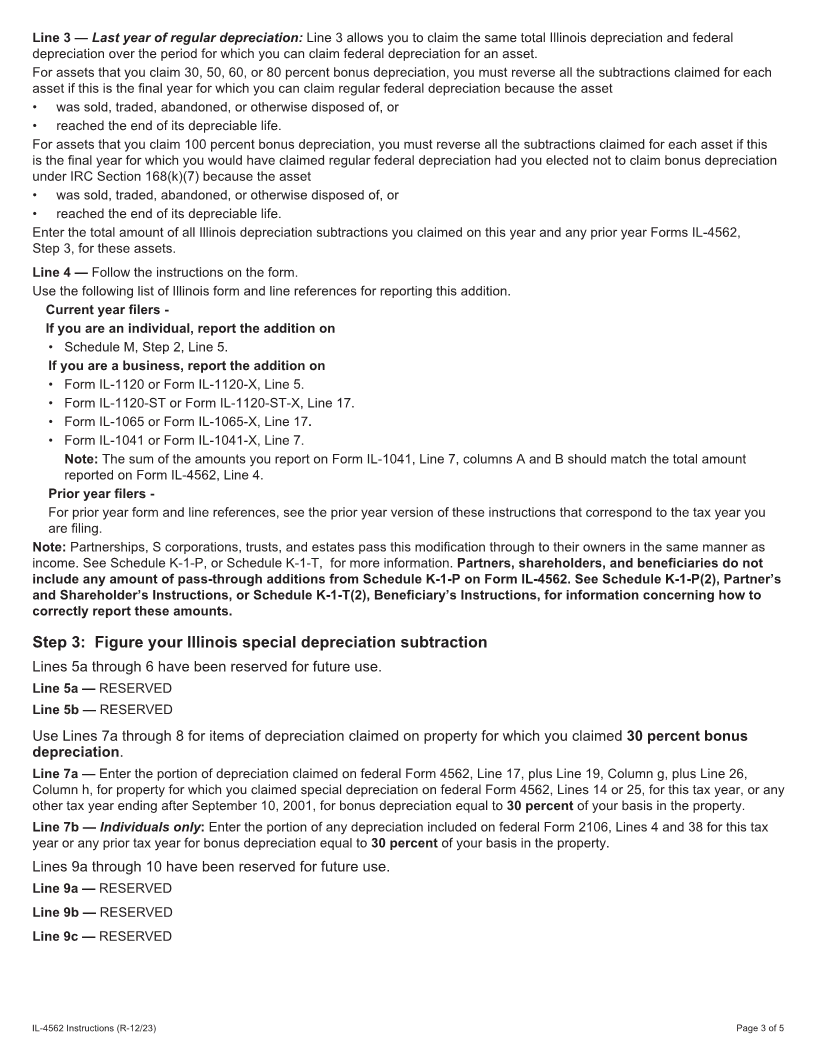
Enlarge image
Illinois Department of Revenue
2023 Form IL-4562 Instructions
What’s New?
This form has been modified to include calculations for property placed in service after December 31, 2023, and before
January 1, 2025, subject to 60 percent federal bonus depreciation. In addition, reserved lines have been added for future
percent amounts.
General Information
What is the purpose of this form?
Form IL-4562, Special Depreciation, should be filed by taxpayers who file an income or replacement tax return and report
special depreciation on their federal Form 4562, Depreciation and Amortization, or Form 2106, Employee Business Expenses.
The purpose of Form IL-4562 is to reverse the effects of the 30, 40, 50, 60, 80, or 100 percent bonus depreciation allowed by
Internal Revenue Code (IRC) Section 168(k).
Step 2 of this form figures your Illinois special depreciation addition as required by the Illinois Income Tax Act (IITA). When
you sell or transfer property, this step also reverses the Illinois depreciation subtractions you claimed on Form IL-4562 in prior
years.
Step 3 of this form figures your Illinois depreciation subtraction as required by the IITA. When you sell or transfer property, this
step also reverses the “bonus depreciation” add back you reported on any prior year Form IL-4562.
If you filed more than one federal Form 4562, be sure to add the amounts from all federal Forms 4562 and enter the
total amounts on this form.
Who must use Form IL-4562?
You must use Form IL-4562 if you are filing an Illinois income or replacement tax return and you reported the special
depreciation on federal Form 4562. Individuals who reported special depreciation on federal Form 2106 should also use
Form IL-4562.
Unitary groups: If you are filing an Illinois combined return, complete one Form IL-4562 for the entire unitary business group.
Do not include on your Form IL-4562 any amount of depreciation additions or subtractions you receive from
• a partnership or S corporation on Schedule K-1-P, Partner’s or Shareholder’s Share of Income, Deductions,
Credits, and Recapture, or
• from a trust or estate on Schedule K-1-T, Beneficiary’s Share of Income and Deductions.
Should I round?
You must round the dollar amounts on Form IL-4562 to whole-dollar amounts. To do this, you should drop any amount less than
50 cents and increase any amount of 50 cents or more to the next higher dollar.
When must I file this form?
You must file this form if you acquired new depreciable property after September 10, 2001, and you claimed additional first year
depreciation of 30, 40, 50, 60, 80, or 100 percent of the basis of that property on your federal return.
What if I need additional assistance or forms?
• For assistance, forms, or schedules, visit our website at tax.illinois.gov or scan the QR code
provided.
• Write us at
Illinois Department of Revenue
P.O. Box 19001
Springfield, Illinois 62794-9001
• Call 1 800 732-8866 or 217 782-3336 (TTY at 1 800 544-5304).
• Visit a taxpayer assistance office - 8:00 a.m. to 5:00 p.m. (Springfield office) and 8:30 a.m. to
5:00 p.m. (all other offices), Monday through Friday.
Printed by the authority of the state of Illinois - electronic only - one copy.
IL-4562 Instructions (R-12/23) Page 1 of 5



